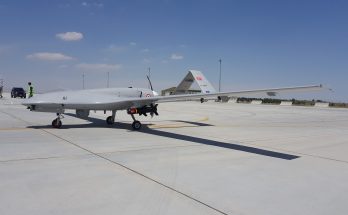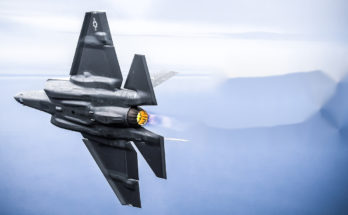by Andrew Dardine, Military Electronics Analyst, Forecast International.
After years of planning and development, the ALQ-249 Next Generation Jammer (NGJ) is now steadily transitioning to full production and deployment. The standoff jamming initiative, which replaces older ALQ-99 tactical jamming system pods on U.S. Navy EA-18G Growlers, is easily the service’s most important electronic warfare program. When complete, the NGJ will provide U.S. forces with an enhanced ability to disrupt and disable an enemy’s ground-based communications and electronic warfare capabilities.
According to U.S. defense budget documents, the NGJ is an evolutionary acquisition program that will provide capability in three frequency increments: Increment 1 (Mid-Band), Increment 2 (Low-Band), and Increment 3 (High-Band). The Navy’s planned start date for Increment 1 low-rate initial production is 2020.
In April 2016, the Navy awarded prime contractor Raytheon a $1 billion sole-source contract to conduct engineering and manufacturing development (EMD) for Increment 1 by producing 15 engineering development model pods, plus 14 aeromechanical pods for airworthiness certification.
In August 2019, Raytheon delivered the first NGJ-MB EMD pod to the U.S. Navy to begin ground and aircraft integration testing.
Further down the road, work on the Low-Band version and the selection of potential NGJ-LB prime contractors are looming. To that end, Lockheed Martin and Cobham announced in March 2018 that they were joining forces for the NGJ-LB competition.
High levels of research, development and test funding for the follow-on versions is assured through the next several years. Based on an estimated projection of the FY20 defense budget, $3.4 billion is likely to be spent on the effort over the next 10 years.
The NGJ’s impact is not limited to the U.S. In November 2017, the Royal Australian Air Force (RAAF) and the U.S. Navy signed a Memorandum of Understanding to cooperatively mature NGJ-MB capability for their fleets of EA-18Gs. Specifically, the MoU provides the framework for communication, coordination and cooperation during EMD.
For 50 years, Forecast International intelligence reports have been the aerospace and defense industry standard for accurate research, analysis, and projections. Our experienced analysts compile, evaluate, and present accurate data for decision makers. FI's market research reports offer concise analysis of individual programs and identify market opportunities. Each report includes a program overview, detailed statistics, recent developments and a competitive analysis, culminating in production forecasts spanning 10 or 15 years. Let our market intelligence reports be a key part of reducing uncertainties and mastering your specific market and its growth potential. Find out more at www.forecastinternational.com




